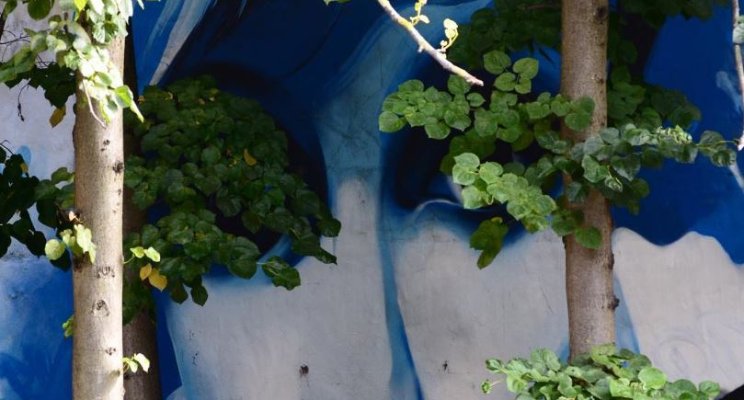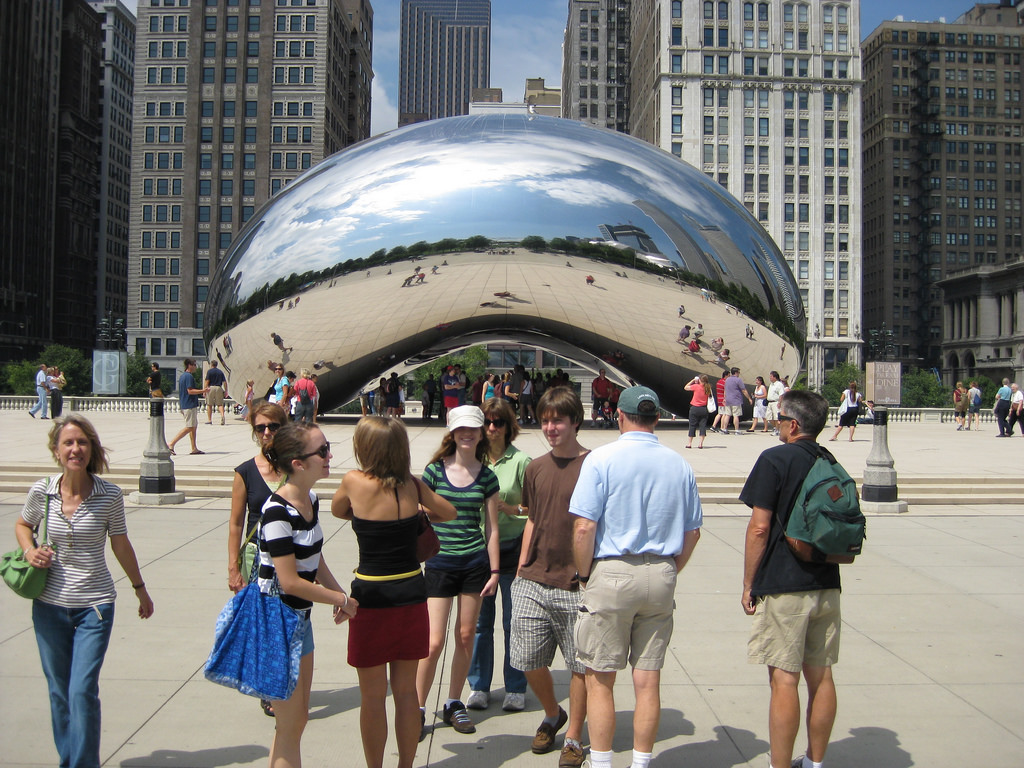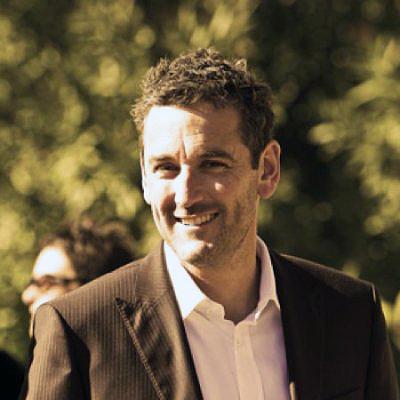
Public art in urban landscapes can animate and enrich civic spaces, and may even help people feel more attached to the places they live. A recent study done in the United States by the Gallup Poll for the Knight Foundation called the Soul of the Community investigated how residents felt about their communities, as indicated by their responses to a broad range of questions. Image above by Angus Bruce.
Over the course of three years, 43,000 people in 26 communities were asked about the emotional connection they felt with their communities. It examined factors that engendered a sense of loyalty, or even passionate feelings about a place. The researchers were looking for ideas that could help these communities understand how to attract and retain the talented workers that cities need in order to thrive.
What they found was that “social offerings, openness and welcome-ness” and, importantly, “the aesthetics of a place, that is… its art, parks and green spaces” ranked higher than education, safety, and the local economy as drivers of attachment. In other words, art, parks and green spaces were considered to be the features that promote in people deep feelings for a place—a sense of belonging.
Landscape architects who are directly engaged in the design of the urban public domain—streetscapes and parks, greenspaces, plazas, laneways, and waterfronts—have long understood this. Our work frequently speaks to creating “places” by promoting distinctive design propositions that respond to the specifics of a locale and express a site’s “sense of place.” We also frequently work with artists to facilitate and implement public art, in collaborations often referred to as “placemaking.”

Anish Kapoor. Photo by Eric Fredericks.
Increasingly, public art strategies and policies are embedded in local government capital works programs and community cultural development agendas. Public art has been added to the social, recreational, and cultural services and programs councils consider to be essential for their residents and visitors. Over time, as these public art projects are implemented, they can have a genuinely transformative effect on public areas, influencing the identity of a community or urban precinct.
There are a wide range of projects that comes under the banner of “public art,” be they site-specific permanent pieces or ephemeral artworks that are activated by, for example, daily tides or occasional weather events. They might be sound installations, performances, or visual extravaganzas, like Sydney’s Vivid Festival. They can also include individual heritage features or monuments from past generations that hold meaning for a community, connecting people to a previous period of history.
Many landscape architects would agree that the most successful public art works in outdoor settings are those that are truly “of the place.” That is, they are created with a particular site and context in mind, and often in consultation or even direct engagement with the public who will enjoy the works.
Public art also has the capacity to connect people to one another, as well as to place. The urban sociologist and astute observer of urban humans in their habitat, William Whyte, observed a phenomenon that he called “triangulation.” He defined this as “the process by which some external stimulus provides a linkage between people and prompts strangers to talk to other strangers as if they knew each other.”
In particular, he noted the strong social effects that sculpture and other public art can have. He noticed that people are actually drawn to it, and it provoked a strong response, whether positive or negative. It often encouraged an exchange of ideas, or a shared experience, no matter how momentary. It might even prompt strangers to have a conversation with each other about it.
Triangulation can be experienced in various ways. Have you ever visited the Vietnam Veterans Memorial in Washington, D.C., by the architect/artist Maya Lin? The pathways draw you down into the site, and at once, you are amid fellow visitors solemnly interacting with the work, seeing your own reflection among the names of dead inscribed on the polished black granite walls of the Memorial Wall. Within the site, the atmosphere is quiet and focused. While you’re there alongside many others, you also feel very alone.
A contrasting experience of triangulation is interacting with the Cloud Gate, by Anish Kapoor in Chicago’s Millennium Park, or “the Bean,” as it is known. Its highly reflective, curved surfaces of polished stainless steel exudes an energy that draws you in, under and around the sculpture, and attracts people to do all sorts of goofy things.
A recent blog commentator noted that it was a lucky coincidence that Cloud Gate arrived around the same time as the selfie, as it is “the kind of recognizable landmark made for Instagram travelogues.”
The not-for-profit organisation, Americans for the Arts, reminds us of the important contribution public art can make to generating equitable and inclusive communities—something we must also commit to achieving as our cities grow larger and more dense.
“Great public art reveals its meaning over time,
rewarding repeated visits. Beyond all that, public art
has the distinct ability to add beauty to our
shared environment; to commemorate, memorialise,
and celebrate; and to transport us, if only momentarily
out of our daily routine. Public art is for everyone
and it is free. Many people don’t visit museums or attend
the theatre… (but) anybody can experience public art.”
– Jack Kerber
Public Art: An Essential
Component of Creating
Communities
This article was reprinted in its entirety from Sourceable. Read the original article here.

